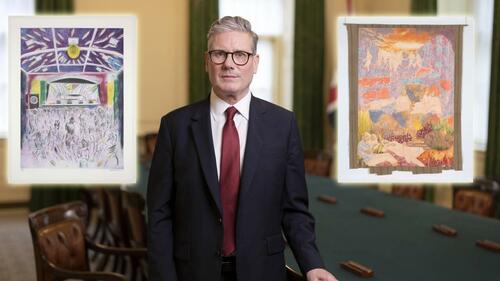Navigating the Surge: What Rising Bond Yields Mean for Investors and Consumers
Tháng 4 15, 2025
Bullish USDCAD Outlook: Key Factors to Watch Right Now
Tháng 4 15, 2025Keir Starmer’s Bold Move: Replacing Historical Artworks with Diverse Art in Downing Street
In a landmark decision that has taken both the political and cultural spheres by storm, British Prime Minister Keir Starmer has initiated a dramatic overhaul of the artwork displayed in Downing Street by removing 69 historical pieces. This collection included depictions of esteemed figures such as the Duke of Wellington, Oliver Cromwell, King Charles I, and Sir Winston Churchill. The primary aim of this initiative appears to be a drive towards modernizing art and fostering a sense of inclusivity within the government’s visual representation.
The Historical Artworks Removed
The artworks removed from government buildings represent a significant portion of British history, encapsulating the country’s royal lineage and its various political epochs. Figures like Sir Winston Churchill, known for his leadership during World War II, and the Duke of Wellington, celebrated for his military prowess, are deeply ingrained in the national culture. The decision to remove these images reflects a broader intent to question the narratives historically portrayed in public art, challenging traditional perceptions of British identity alongside their often contentious legacies.
Embracing Diversity with Contemporary Art
Starmer’s replacement of these historical pieces with what has been referred to as “diverse dawbings” marks a departure from the past, introducing a new era where contemporary and inclusive art is showcased in significant national spaces. These pieces represent a wide array of societal voices, ushering in fresh perspectives that resonate with a diverse modern population. The shift underscores a commitment to reflect the multifaceted nature of British society, acknowledging its varied cultural heritage that often extends beyond the historical figures traditionally celebrated.
This transformation in public art also aligns with a larger societal movement, emphasizing the importance of representation in artistic expressions. By introducing diverse talent into the most recognized government building in the UK, Starmer is signaling that the government values inclusivity and diversity, fostering a culture that resonates with a broader swath of the populace.
Public Reaction and Cultural Debate
The decision to remove historically significant artworks has sparked robust debate among the public. Critics decry the move as an “assault on cultural heritage,” expressing concerns over the erasure of historical figures who have shaped British history. They argue that this shift may undermine the educational value these artworks hold, particularly for younger generations seeking to understand the nation’s past.
Conversely, many view this initiative as a progressive step toward inclusivity. Advocates argue that embracing diverse art can serve as a bridge that connects different communities, allowing for a more holistic understanding of history that includes a variety of voices and experiences. This discourse is indicative of a broader conversation surrounding the role of art in public spaces, and how it can shape cultural narratives.
In conclusion, Keir Starmer’s decision to replace historical artworks with diverse art pieces in Downing Street is a bold statement that highlights the ongoing evolution of cultural representation in the UK. As society grapples with its history and its portrayal in public spaces, this move might not only redefine the art environment in Downing Street but also affect the national dialogue around heritage and inclusivity in the arts.

